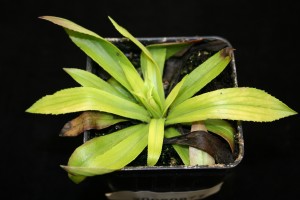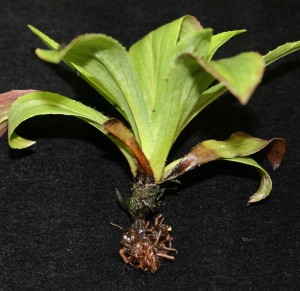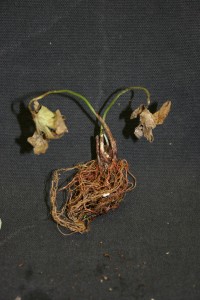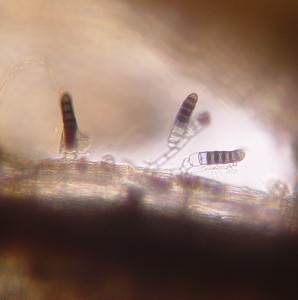Thielaviopsis basicola
Pathogen: Thielaviopsis basicola
Hosts Include: Digitalis, Gaillardia, Geranium, Lathyrus, Lupinus, Pachysandra, Phlox, and Viola.
Symptoms: Stunting, yellowing, and plant death. Symptoms are often mistaken for nutrient deficiency symptoms.
Spread: Thielaviopsis basicola produces spores that can persist for long periods of time in soil or on infested pots and equipment. Reusing infested equipment is a common source of disease. Fungus gnats and shore flies can vector spores.
Management: Do no reuse plug trays, flats or pots for susceptible crops. Keep good records of the production areas where there have been problems with T. basicola. Avoid growing susceptible crops in these areas for several years. Fungicide drenches should be used to protect very susceptible plants from infection.



 Print
Print Email
Email


